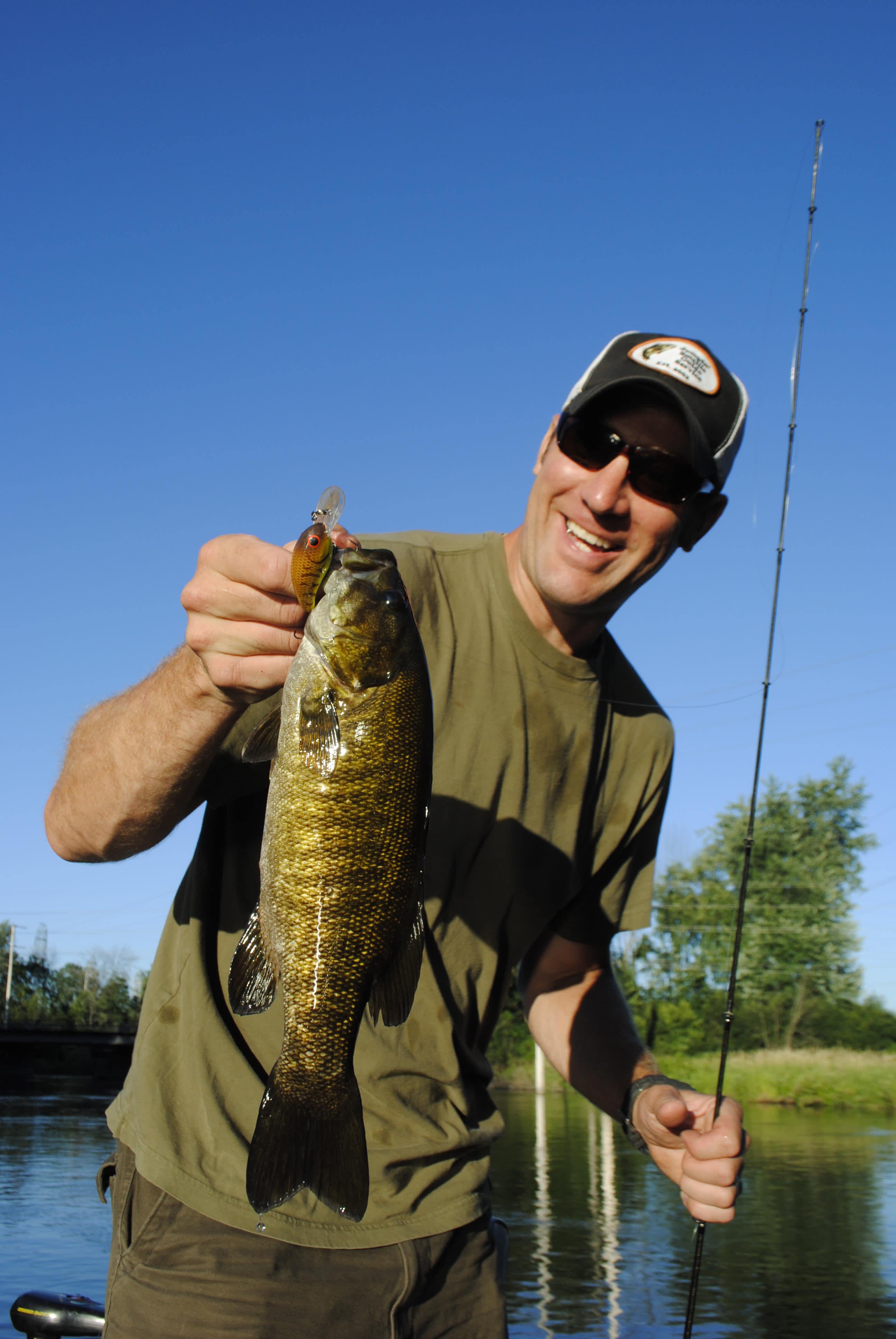Southwest Michigan’s Kalamazoo River Serves Up Bass and Pike
Bob Gwizdz 09.25.13

Four or five casts into our trip, Scott Markham announced that he’d hooked “something big.”
He’d been running a crankbait near a cool-water seep in the Kalamazoo River many miles below Morrow Lake in southwest Michigan when the fish stopped it cold. It didn’t take long to realize that Markham had hooked a big pike.
Which is not all that unusual; over the years, Markham and I have caught a lot of pike while bass fishing here. But this one was the best yet. Markham handled it with aplomb but as it neared the boat it became apparent the landing net wasn’t even going to hold half of it. Fortunately, the fish hadn’t taken the bait too deeply into its toothy maw, so Markham just played it until it was worn down, then pulled the pike upside the boat and reached down with both hands and grabbed it.
“This is the perfect hot-weather spot for pike,” said Markham, who’s been catching a fair number of them lately on his bass fishing safaris. “It’s probably the coolest water in this stretch of the river and when the water temperature gets up like this, the big pike gravitate toward it.”
Markham posed with the fish for a couple of photos, then held it in the water, reviving it, until it darted away.
“Well, that was worth the stop,” he said.
It was an unusual stop for Markham; every time I’ve fished with him over the course of the last 10 years—on this and other stretches of the Kazoo—he’d run as far upstream as he planned to fish, then fish his way back down. And after a few more unproductive casts, that’s what we did.

We started catching bass as soon as we got up where we wanted to go, which was a relief as Markham wasn’t sure what the evening would hold. The Kalamazoo city electrician—and sometimes fishing guide—and I had scheduled evening trips a couple of times this summer, only to cancel them when intervening rains raised and colored up the water. As it was, Markham said, the river had come up a couple of feet over the course of the last four days and it was decidedly murky. But if you wait to fish until everything’s perfect, well, you’ll never go.
“It’s amazing that with the water as high and dark as it is they can even see the bait,” said Markham, as he unhooked and released a 12-inch smallmouth that smacked the same crankbait the pike had taken. “But they find it.”
They weren’t finding mine, a somewhat shallower-diving bait. I switched over to a tube and within a cast or two hooked up. It was a small largemouth, one of three we’d nail intermittently among the 29 smallies (and two rock bass) we caught over the course of our four-hour trip.
The river was higher than I’d ever seen when fishing with Markham, and the current was ripping. Fact is, I caught most of my fish with a rather unorthodox style; I was fishing it as if it were a spawn bag and I was chasing steelhead. I’d cast the bait as close to the target—bank, rock, or fallen tree—as I could, pop it out in the current, and then kind of walk it downstream. When I felt a tick (kind of like a steelhead picking up a spawn bag), I’d set the hook.
Which I did—as did Markham, who switched over to a jig with a plastic crawdad trailer—often. But only about a third of time did we get the bass in the boat. A fair percentage of the time the smallies would go airborne and throw the bait back at us.
“They’re not eating it good,” Markham said.

Of course, some of them were likely too small to eat it “good.” We caught a bunch of 10- to 12-inch specimens, as it seems you always do when fishing for stream smallmouths. But a half-dozen of the smallmouths we boated would have been legally keeper-sized (14 inches or longer).
Our best fish of the day was 17.5 inches—a challenge to catch on light tackle in the ripping current, but smaller than usual. I can’t remember ever fishing with Markham that we didn’t have at least one (and often several) that would scare the heck out of four pounds and we’ve caught some five-pounders over the years, too.
As it was, I was tickled with our results. Given the water conditions, we did better than I’d guessed we would have. And just the fact that couple of guys can go out in an urban setting and have that quality of fishing one night after work is something to be thankful for.
Markham has been guiding for smallmouth bass on the Kalamazoo River for about a decade now. You can check him out at www.jumpinsmallie.com.
For more information on Michigan fishing go to michigan.org. Click here to purchase a Michigan fishing license online.

